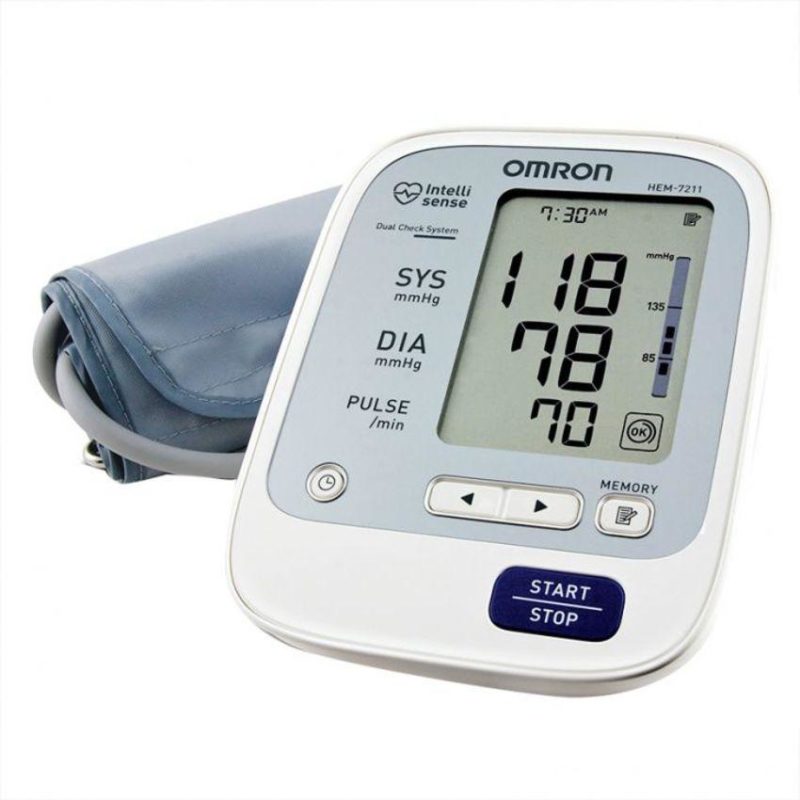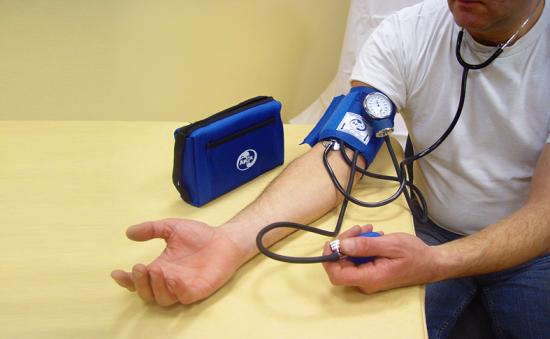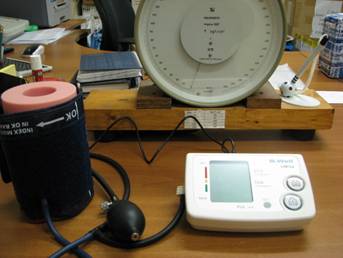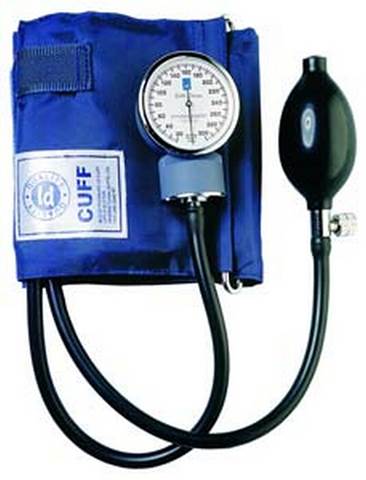It is important for any person to monitor their health, because they constantly have to deal with many negative factors. First of all, this concerns blood pressure, therefore affordable and accurate measuring instruments are available on the market. However, it is important to understand how to check the tonometer to make sure the readings are accurate.

Proper use of electronic blood pressure monitors
Electronic devices are popular because they are relatively inexpensive and do not require special skills and knowledge from a person. Even older people can easily cope with it using a simple instruction:
- The device turns on.
- The cuff is attached to the shoulder.
- The “Start” button is pressed.
- It is expected that measurements will be completed with information displayed on a small screen.
However, measurement accuracy plays a key role. Unfortunately, electronic devices often fail. Regular calibration of tonometers will avoid this and obtain accurate data on the level of blood pressure.

First of all, it is important to use the device itself correctly in order to avoid data distortion:
- Wear the arm cuff correctly.
- Keep calm during the measurement process.
- Keep track of the battery level of electronic devices.
Stress, physical activity, alcohol, and even a cup of strong coffee can increase or decrease blood pressure. If there are distortions in the normal state, then you should figure out how to check the tonometer.

Setting tonometers for work
Specialists in medical institutions test devices using a professional installation that simulates a specific pulse and pressure. Tonometer is calibrated according to specific indicators, so doctors evaluate the quality of each specific tonometer. For this, the right to verify the measuring instruments used to treat patients is necessary. Unfortunately, at home, this option is not suitable.
What to do to ordinary people who do not work in clinics and hospitals?
Tonometer calibration is a service that is offered in many pharmacies, especially those specializing in the sale of medical equipment. Specialists will configure and set the correct indicators. For this, a reference device is used to compare for accuracy.

How to check the tonometer at home?
The option with a reference tonometer is also suitable for home use. If you or someone you know has another device that you are sure of, use it for comparison. It will help to identify not only gross deviations from the norm, but also a small error.
Some people, especially those of advanced age with extensive experience in measuring pressure, often find that mechanical tonometers are better and more precisely. However, this is not so, because modern electronic devices do their job perfectly. The parallel measurement method (using a different tonometer) makes it possible to assess the quality of each device.
To avoid errors, you need to follow certain instructions:
- The instruments are connected in parallel so that the measurement takes place simultaneously.
- Several test measurements are carried out to obtain an objective assessment.
- If necessary, the individual elements of each device are checked.
Simple construction mechanical tonometer Consists of a pear, pressure gauge and shoulder cuff. They are connected together in a single system, the pressure in which is always the same.A mechanical device can be used as a reference in parallel measurement.
You need to do this as follows:
- The pear is unscrewed.
- An electronic tonometer is connected to the tube through a special adapter.
- The process of pressurization and further measurement starts.
There is no particular difficulty in this, only an adapter is needed. The design of the medical device makes it easy to unscrew individual elements without any complications.

This option is interesting in that the information is obtained immediately in two ways:
- On the screen of an electronic device.
- Using a conventional phonendoscope.
A sufficiently experienced person is able to count the pulse rate by ear, so he sees deviations and errors in the performance of the electronic device.
Remember that the permissible error is not more than 3 mm Hg. Deviations greater than this value no longer correspond to the norm; therefore, calibration of the device is required.
If there are deviations, check the correct connection of all elements, the reliability and uniformity of the cuff fixation. If this does not help, then contact the service center for an accurate check and setting of tonometers. You should not use a device that gives incorrect readings, even if the deviations are not too significant at first glance.



